【AD】What is Saiku and the Saio? Introducing a tour of museums, hands-on facilities, and historic sites!
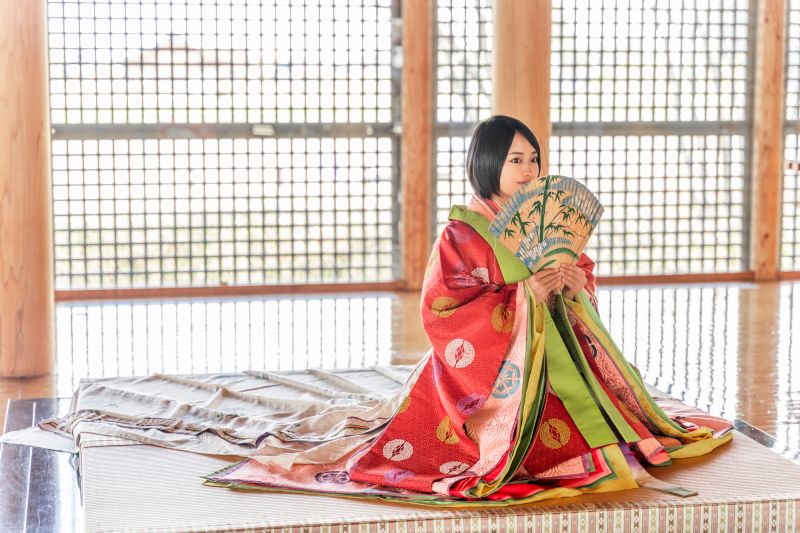
Have you ever heard about the Saio who served the Ise Jingu for generations in place of the Emperor? Enjoy learning about the history and culture of the Saio period through a visit to historical sites, museums, and hands-on facilities in Meiwa, where the Saio's palace, Saiku, was located.
Table of contents
2. Learning about the Saio and Saiku at the Saiku Historical Museum!
3. Tasting a Saio meal at the Itsuki Chaya
4. Experiencing the culture of the Heian period(Late 8th century - late 12th century) at the Itsukinomiya Hall for Historical Experience!
5. Visiting the reconstructed Saiku Offices at the Historic Park “Saiku Heian-Era Park”
6. Visiting nearby places of interest!
7. Renting a bicycle to tour around the Saiku area!
1. What are the Saio and Saiku?
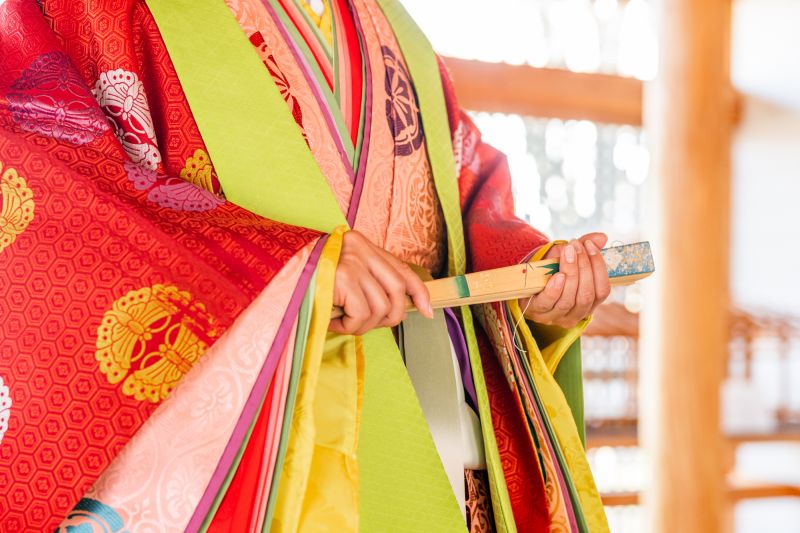
<What is the Saio?>
Imperial women who served the Ise Jingu on behalf of the emperor.
Saio were unmarried female members of the imperial family who served at Ise Jingu on behalf of the emperor.
The Saio system was established in the late 7th century (Asuka period), and it is said that more than 60 women of the imperial family served as Saio for about 660 years until the beginning of the 13th century (Nanbokucho period).
Whenever an emperor acceded to the throne, the Saio was chosen from among unmarried imperial princesses by an ancient method of divination called "bokujo," and was dispatched from the capital to the Saiku palace.
<The duties of the Saio>
The most important role of the Saio was to participate in the major festivals held three times a year at Ise Jingu (Kanname-sai in September and Tsukinami-sai in June and December). In addition, the Saio also fulfilled their duties by participating in various ceremonies and events on a regular basis.
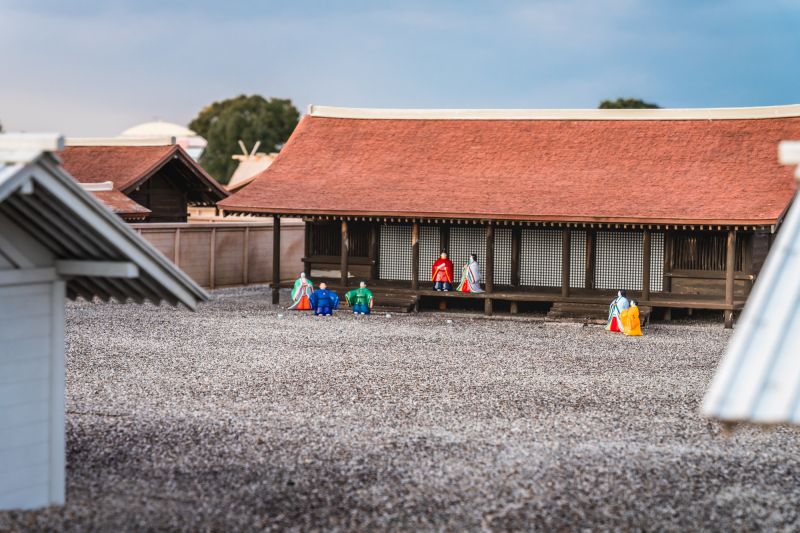
<What is Saiku?>
Saiku refers to the place where the Saio palace and the government office for taking care of the Saio were located.
The Saiku ruins are located in the ancient Taki- (Take) gun, present-day Meiwa Town, Mie Prefecture. They are found at the entrance to Shin-gun (Shinsan-gun) of Ise Jingu, about 15 km away from Ise Jingu, but the reason why Saiku was built here is not recorded in historical documents and is still unknown.
<Saiku, the“Take-no-miyako”!>
The total area of the Saiku ruins (national historic site of Saiku) is about 137 hectares. That is equivalent to 35 Koshien Stadiums!
More than 100 buildings were erected in the vast land, and about 520 people worked at Saiku.
As a local city at the time, it was just as important as Dazaifu (the government that ruled Kyushu, far from the capital, and served as a diplomatic window to the mainland), which was called “To-no-mikado” (meaning “government office far from the capital”), and was also known as the“Take-no-miyako”.
2. Learning about the Saio and Saiku at the Saiku Historical Museum!
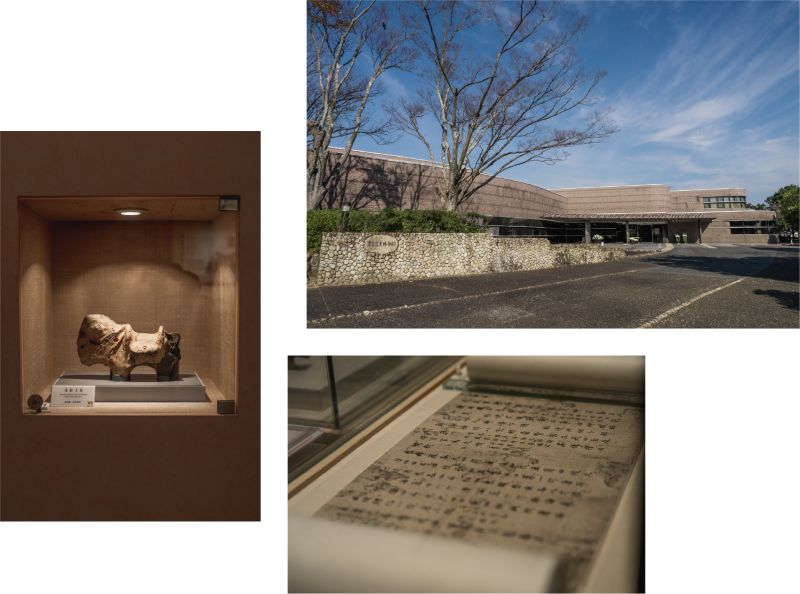
At the Saiku Historical Museum, visitors can learn about the history and culture of the Saio and Saiku.
With various exhibits such as earthenware and ceramics excavated from the Saiku ruins, documents describing Saiku, and videos and models of Saiku, the museum offers an easy-to-understand and fun way to learn about Saiku!
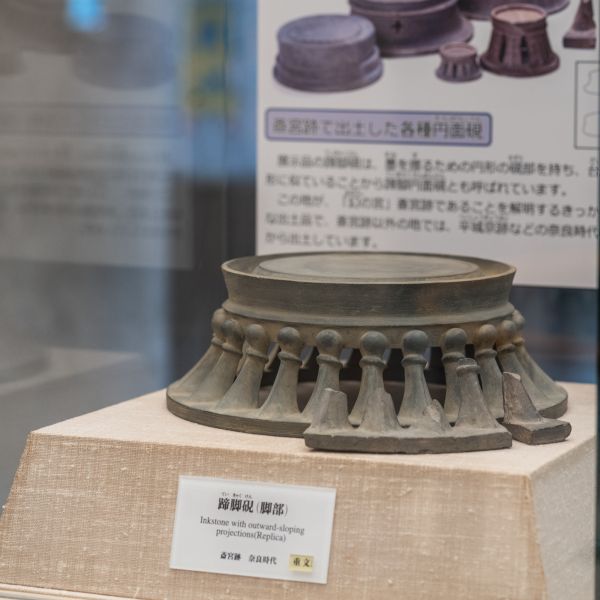
~Learn about Saiku from excavated artifacts!~
<Important inkstone that led to the discovery of the Saiku ruins>
The artifact shown in the photo is an inkstone used by Saiku officials for writing.
The base of this inkstone with outward-sloping projections is shaped like a horse's hoof.The piece in the foreground is part of the actual inkstone excavated during the excavation, and the one in the background is a replica.
The elaborate reconstruction gives us a clear picture of the inkstone as a whole.
This inkstone has played a very important role as an artifact in the historical research of Saiku.
Because...
*****************************************************************************************************
<The inkstone with outward-sloping projections revealed the location of the phantom palace, Saiku!>
Although historical data and various legends remain about Saiku, it was called a phantom palace because its specific location was unknown.
One day, the inkstone with outward-sloping projections was unearthed during excavations in 1970 in the Furusato district (the area northwest of the Saiku ruins, in the Furusato Square area south of the Saiku Historical Museum).
The discovery of the inkstone with outward-sloping projections, which was only found at Heijo-kyo and Dazaifu ruins, confirms the location of the phantom palace, Saiku.
The Saiku ruins were subsequently designated as a national historic site in 1979, and excavations continue to this day.
In 2015, it was also recognized as a Japan Heritage site by the Agency for Cultural Affairs as “Saiku: The Palace of Saio - the Imperial Princess Prays” consisting of the Saiku ruins, excavated artifacts, and related historical sites.
*****************************************************************************************************
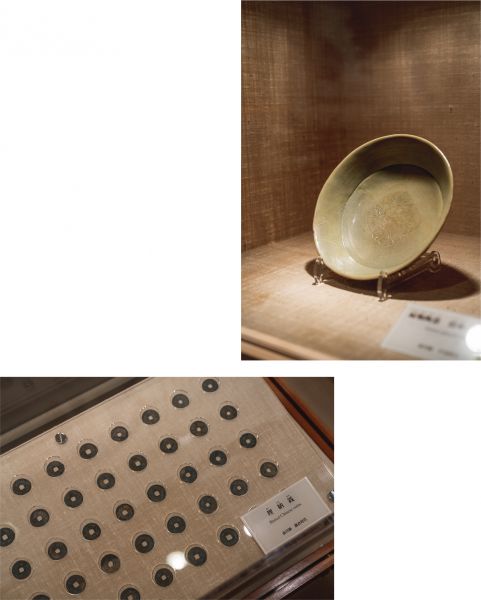
<A look into the culture of Saiku! A variety of excavated artifacts>
The Saiku Historical Museum offers an up-close look at earthenware and ceramics excavated from the Saiku ruins, as well as many other artifacts.
The photo above shows a high-end Heian period(Late 8th century - late 12th century) pottery called "green glazed ceramics".
It is characterized by its beautiful color and luster resulting from the use of green glaze.
More than 7,000 pieces of green glazed ware have been excavated from the Saiku ruins.
The large number of green-glazed ware vessels excavated at the site clearly shows that Saiku was a place where the Heian culture flourished.
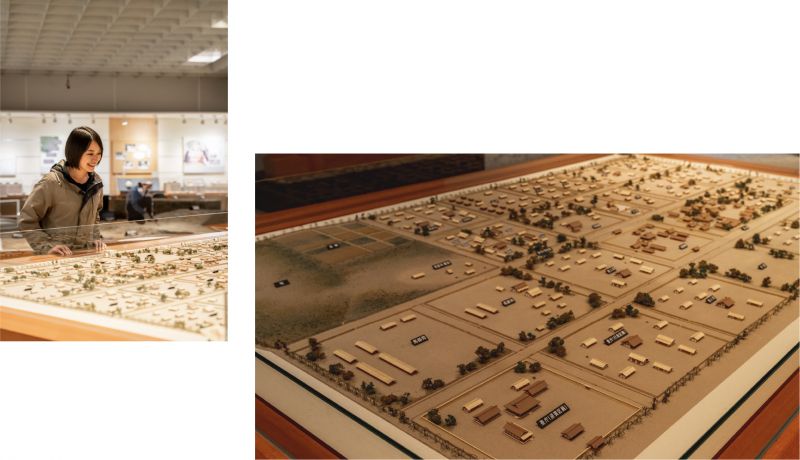
<1/400 scale model of the Saiku Office>
The Saiku Historical Museum displays various models of the Saiku.
One of them is a 1/400 scale model that represents the entire Saiku in the Heian period!
Visitors can observe the entire Saiku from above and get a good idea of what it used to look like.
<Just like Kyoto! A city spread out in a grid pattern>
During the reign of Emperor Kanmu, who served as emperor from the end of the Nara period to the beginning of the Heian period, a vast urban area (called "hokaku gaiku") was created in Saiku, divided into a grid pattern.
The city of Kyoto, the capital of Japan at that time, was also laid out in a grid pattern in line with the "joubou system" (grid city plan used for the Imperial capital).
It is thought that the Saiku area looked like a capital city.
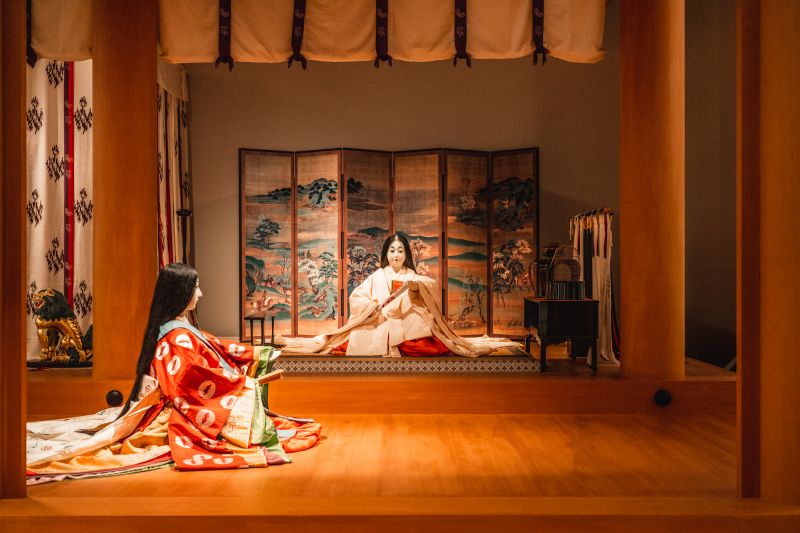
<Daily life of the Saio>
The photo shows the museum’s model of the Saio's living quarters.
The model depicts the Saio's myobu (who was sort of like a secretary to the Saio) in the foreground and the Saio on the tatami mat in the back, talking with each other.
According to records, the Saio spent their days praying for the Ise Jingu , composing songs, and playing musical instruments such as the koto (Japanese harp), and living a life no different from that in the capital.
However, while leading a glamorous aristocratic life, there was also a rule among the Saio who served the Ise Jingu Shrine, that words related to Buddhism and dishonor must not be uttered.
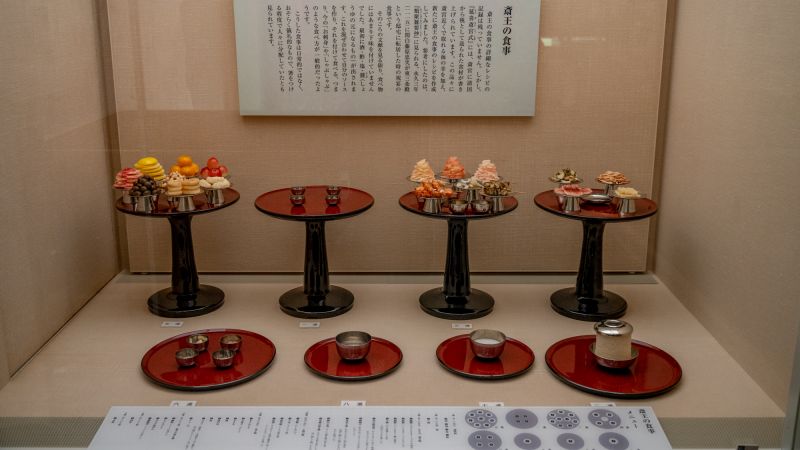
<Meals of the Saio>
The photo shows a model of the Saios’ meals.
Since there are no written records containing recipes for the Saios‘ meals, the model was created by adding seafood that would have likely been caught near the Saio’s palace to lists of ingredients delivered to the Saio from various countries at the time.
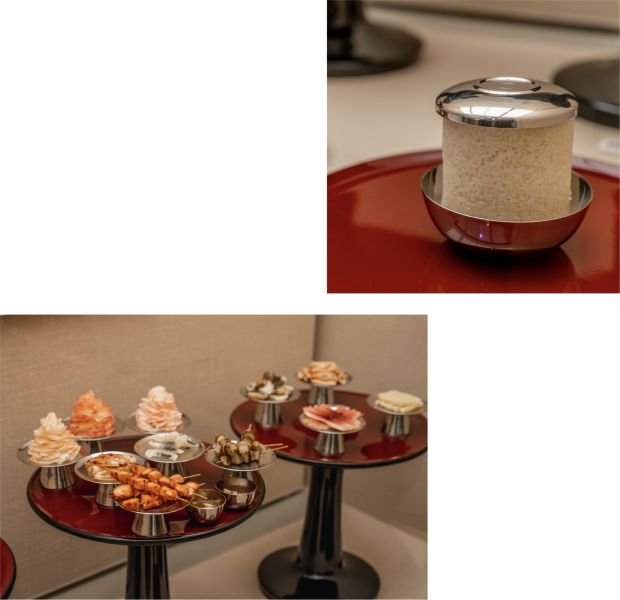
<The various ingredients that were brought to Saiku>
Grains such as rice, barley, wheat, millet, soybeans, and azuki beans, seasonings such as salt, vinegar, and hishio (paste similar to miso made from koji mold and salt water), fish and shellfish such as abalone, bonito, salmon, ayu, crucian carp, and sea bream, poultry, seaweed, and fruits such as chestnuts, lotus seeds, and dried persimmons were brought to Saiku from various countries as taxes.
In addition, fresh local fish, shellfish, and vegetables are also thought to have been brought to Saiku.
The fact that such a wide variety of ingredients were gathered here shows how Saiku, the palace where the Saio lived, prospered.
<The Saiku Historical Museum has many more exhibits on display!>
This article introduced some of the exhibits at the Saiku Historical Museum, but there are many more!
The exhibits are very detailed so you can learn a lot about Saiku and the Saio just by exploring the museum.
Please enjoy learning♪
*******************************************************************************************
<Sightseeing information>【Hours】 9:30 - 17:00 (Admission until 16:30)
【Closed】 Mondays (or the following day if Monday is a national holiday) and the New Year holiday
【Admission fee】 Adults: 340 yen / College students: 230 yen / Free for elementary, junior high and high school students
(Group discount for groups of 20 or more: Adults: 270 yen, College students: 180 yen)
*Special exhibitions are extra.
【Location】 503 Takegawa, Meiwa-cho, Taki-gun, Mie Prefecture
*******************************************************************************************
3. Tasting a Saio meal at the Itsuki Chaya
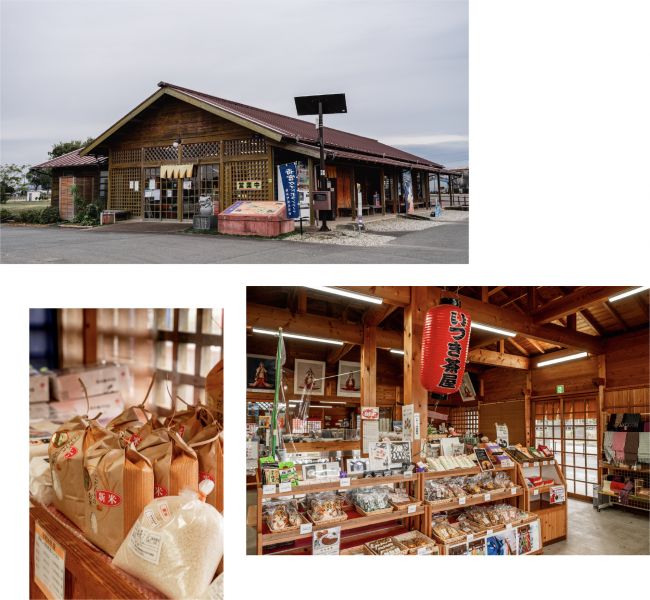
Located 850 meters from the Saiku Historical Museum, the Itsuki Chaya is a convenient facility with a store selling souvenirs and local products, as well as a free rest area.
The free rest area space allows visitors to bring their own bento lunches.
In addition, visitors can purchase meal tickets to enjoy menu items such as hijiki udon noodles (550 yen including tax), fried rice (650 yen including tax), curry rice (650 yen including tax), and other dishes using local specialty ingredients.
Take a break from touring around the Saiku area at the Itsuki Chaya♪
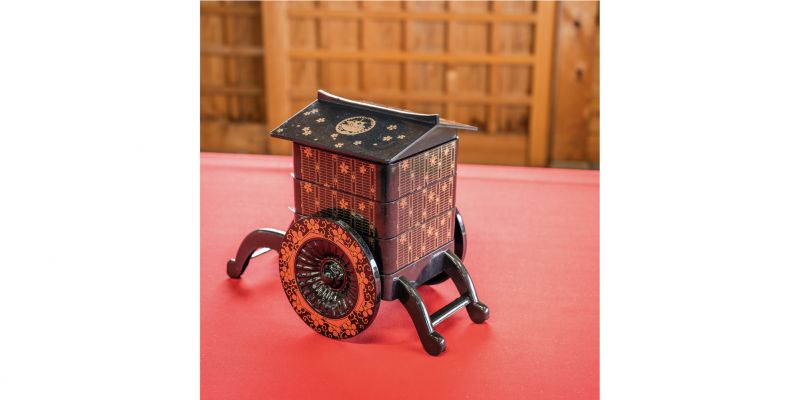
<Enjoying a Saio meal in a bento lunch>
At the Itsuki Teahouse, you can make a reservation in advance to enjoy a bento box that replicates the Saios’ meals, called the "Saio bento: Saio treasure box" (1,600 yen including tax)!
(*Reservations must be made at least 3 days in advance with a minimum order of 4 meals.)
The glamorous bento box in the shape of a goshoguruma (a vehicle of the imperial family or nobles) adds a nice and special touch.
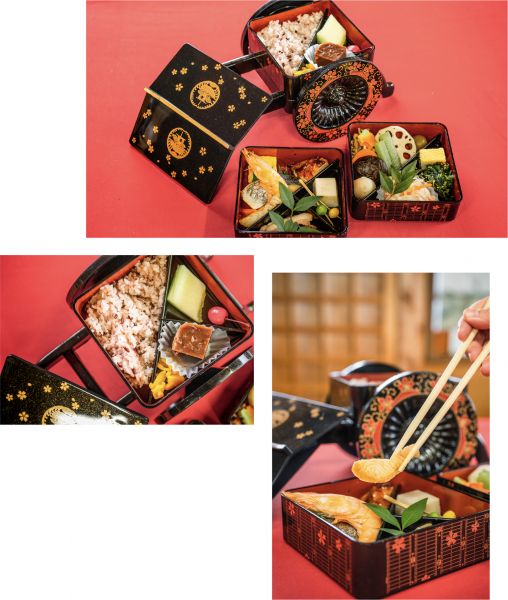
The contents of the bento box are prepared using seasonings and cooking methods from the Heian period, under the guidance of the Saiku Historical Museum.
It is also served with black rice, which is the closest to ancient rice, and is very tasty with a lumpy texture♪
Visitors can also enjoy foods that are believed to have been consumed by the Saio at the time, such as "Same no tare" (grilled dried shark meat), which is only eaten in the Ise-Shima and Kishu areas.
Other ingredients include seasonal fish caught in Ise Bay and local vegetables.
It’s such a luxurious bento box lunch with plenty of local delicacies!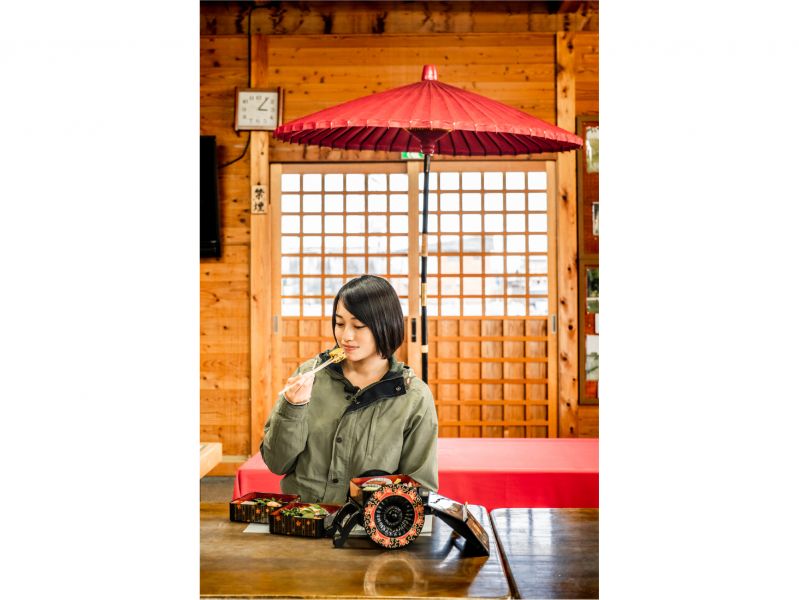
Doesn’t that sound like a great way to spend your time?
******************************************************************************************
<Sightseeing information>
【Hours】 April - October: 9:00 - 17:15 (last order at 16:30); November - March: 9:00 - 17:00 (last order at 16:00)
【Closed】 Mondays (or the following day if Monday is a national holiday) and New Year holiday
【Location】 2969-4 Saiku, Meiwa-cho, Taki-gun, Mie Prefecture
******************************************************************************************
4. Experiencing the culture of the Heian period at the Itsukinomiya Hall for Historical Experience!
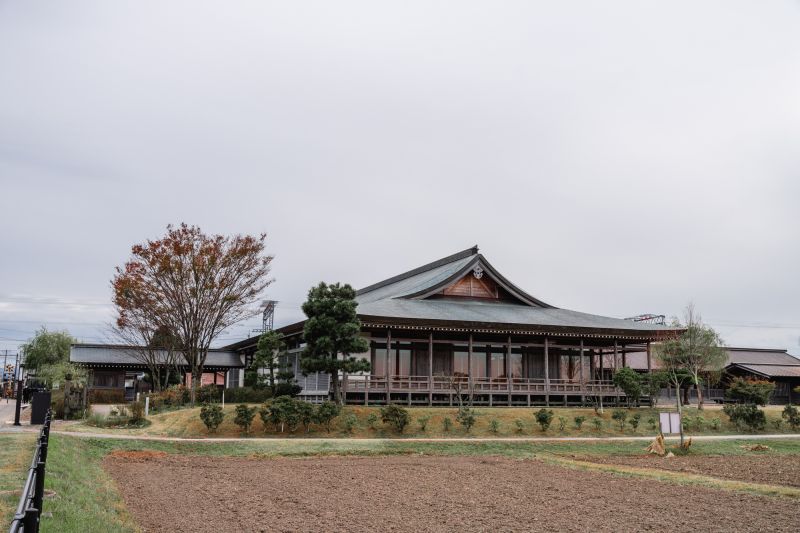
The Itsukinomiya Hall for Historical Experience is a facility where you can enjoy learning about the culture of the Heian period through various hands-on activities.
The hall is made up of a guidance building modeled after a shinden-zukuri (Heian period aristocratic residence) and a hands-on learning building modeled after an ancient government office.
Each building is made of cedar and cypress from Mie Prefecture and incorporates ancient architectural techniques, so the buildings themselves are a sight to behold!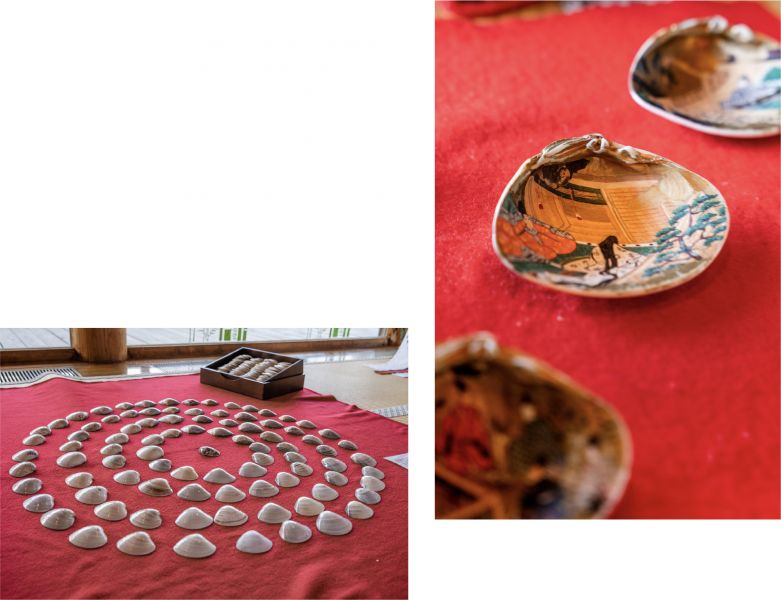
At the Itsukinomiya Hall for Historical Experience, you can try on a juni-hitoe (12-layered kimono), engage in weaving, challenge dyeing with vegetables, make a fire, create earthenware, and much more.
The photo shows an ancient game called "Kaioi" (shell matching). It’s a game where players use clues such as size and pattern to find a matching shell, similar to a memory card game in modern times.
In addition, you can ride on a palanquin of the Saio, or play ban-sugoroku, a board game popular in the Heian period.Play as if you were an aristocrat in the Heian period♪
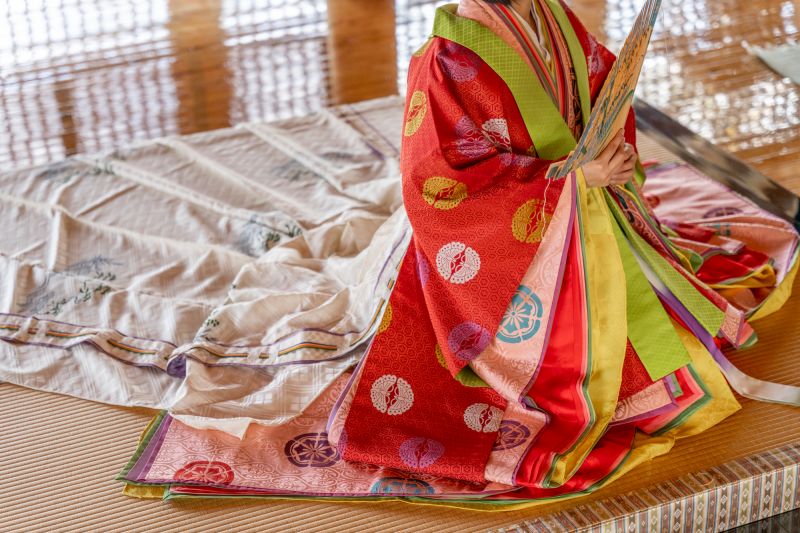
<Trying on a juni-hitoe, the formal dress of the Heian aristocracy.>
The juni-hitoe is the formal dress of the Heian aristocracy.
The Saio and the court ladies who served at the Saiku also wore juni-hitoe on a daily basis!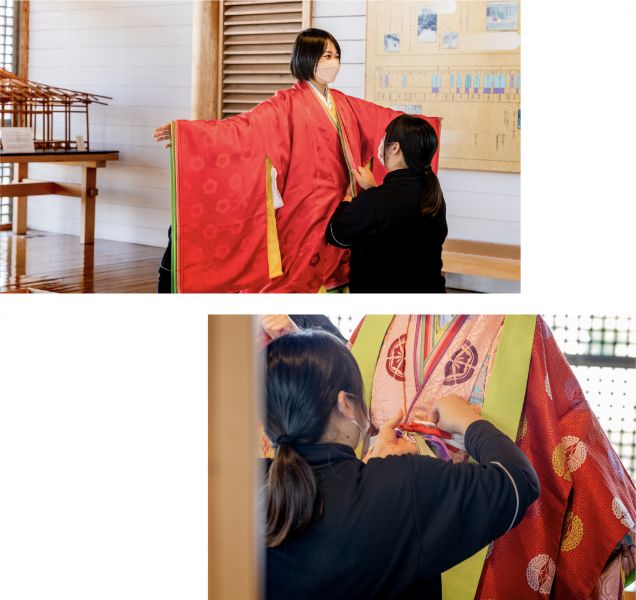
The surprising part about the juni-hitoe is its heavy weight!
The total weight is a whopping 10 kilograms.
When standing with it on, you can feel the heavy load on your shoulders.
The aristocrats of the Heian period may have gone through a great deal of trouble in exchange for looking noble in several layers of beautiful kimonos....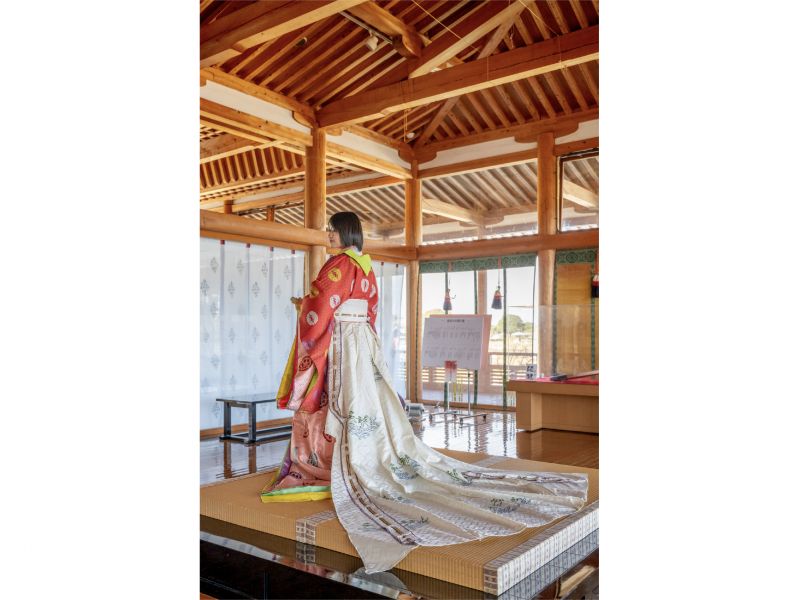
After putting it on, it's photo time! The juni-hitoe also looks very glamorous when standing up.
In addition to the juni-hitoe, men and children can try on Heian aristocratic costumes at the Itsukinomiya Hall for Historical Experience (reservations required).
It’s nice to be able to try on a variety of costumes♪
******************************************************************************************
<Sightseeing information>
【Hours】9:30 - 17:00 (Admission until 16:30)
【Closed】 Mondays (or the following day if Monday is a national holiday) and the New Year holiday【Admission fee】 Free admission / fee for some activity lectures and for trying on costumes
【Location】 3046-25, Saiku, Meiwa-cho, Taki-gun, Mie Prefecture
******************************************************************************************
5. Visiting the reconstructed Saiku Offices at the Historic Park “Saiku Heian Era Park”
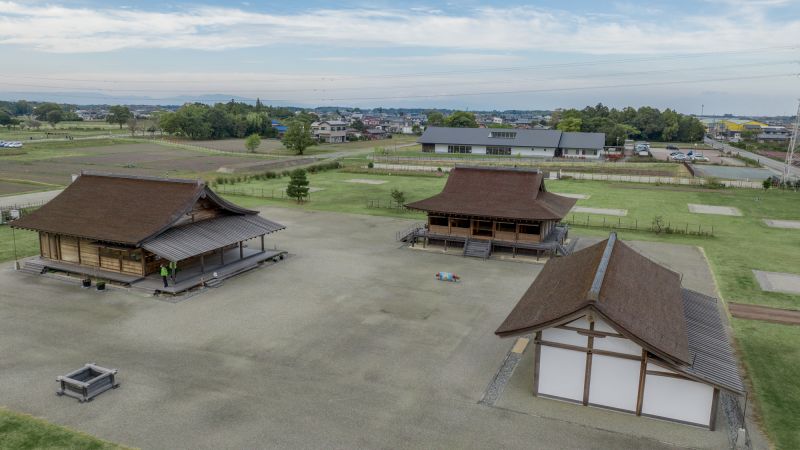
The full-scale buildings have been reconstructed on the site where the former Saiku Office was excavated, protecting the underground remains and using the construction methods of the time, so you can feel like you’re at the real Saiku Office as it actually stood!